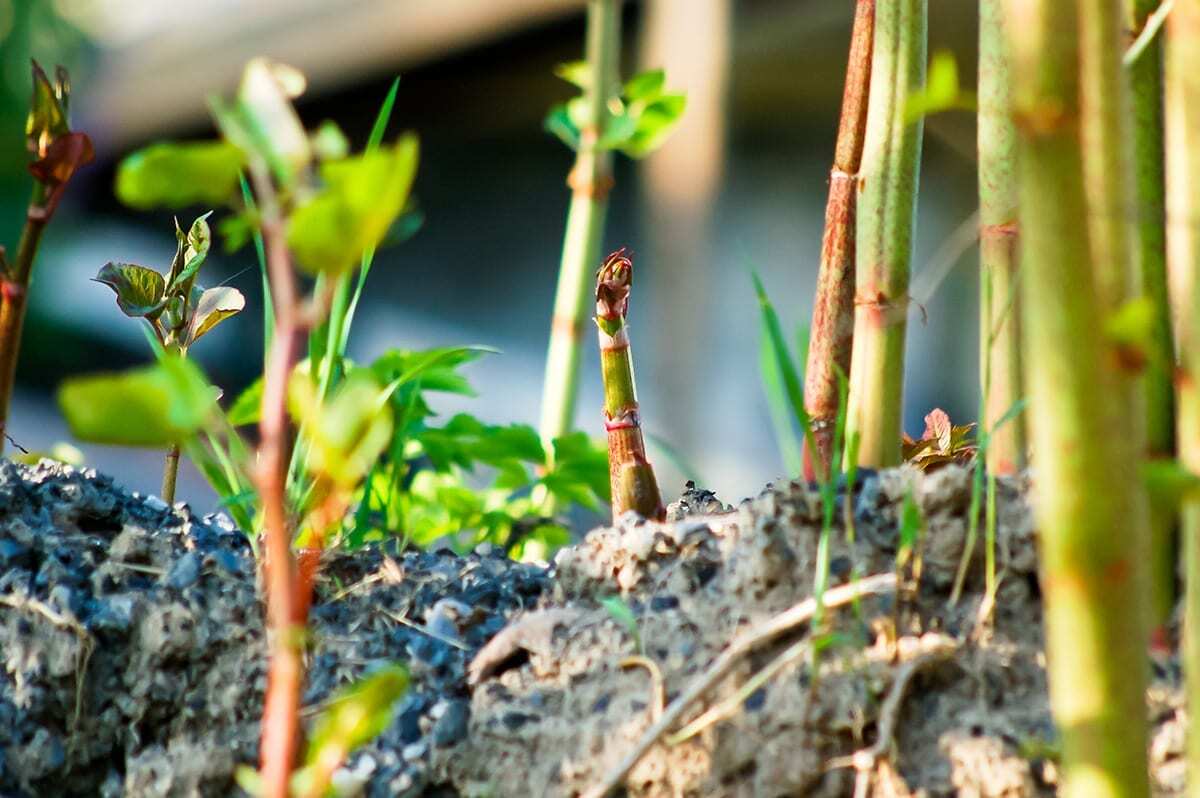
Japanese Knotweed is an invasive non-native plant pest and is considered one of the most problematic plant species in the UK and Ireland. This is mainly due to its highly invasive nature and its extremely rapid growth rate. The species was introduced to Britain in mid-19th century as an ornamental plant for large gardens, prized due to its imposing size and sprays of creamy white flowers.
Japanese Knotweed’s Rapid Growth Patterns
During the spring and summer months, Japanese knotweed has been reported to grow as quickly as 10cm a day. However, there is no research to support how fast it spreads underneath the ground. Japanese Knotweed has an extensive underground rhizome system that can spread up to 7 metres horizontally and 3 metres deep. However, from experience, underground rhizome growths reach approximately 2m in depth and width. Japanese Knotweed can grow up to 0.3 – 0.4 metres per week, meaning that in just 10 weeks a cane of the plant can reach up to 3-4 metres.
The spread of Japanese knotweed can be increased by the breakage or disturbance of the ground. This is why it is important to underline the future plans of a site and to establish what method of treatment should be put in place prior to works. Laws are in place to prevent the spread of the highly invasive plant: Wildlife and Countryside Act 1981 – “You must not facilitate the spread of Japanese Knotweed in the wild.” Failure to comply with the act could result in large fines.
Why Japanese Knotweed Is Hard To Eradicate
Japanese Knotweed is a self-propagating plant, meaning that it spreads and grows from fragments of the plant itself. A common mistake is to trim the plant once it is overgrown and put the fragments in common waste. Japanese Knotweed plants must be taken to a licensed landfill or licensed incineration centre, once removed from a site.
Please see the relevant law put in place to ensure the appropriate care is taken when disposing of the plant: Environmental Protection Act 1990 – “Waste containing Japanese Knotweed is classified as ‘controlled waste’. As such, you must observe the appropriate duty of care for its proper handling and disposal“.
It is important to note that when applying herbicide to the plant, it is the leaves that will hold the herbicide prior to photosynthesis that allows the herbicide to travel to the root structure of the plant and cause it to lie dormant underground. If disturbed, we may see new growths and the treatment programme will have to re-start.
If undisturbed and untreated Japanese Knotweed plants will continue to grow rapidly and thrive in damp and non-resistant areas. Causing external and internal damage to boundary walls of properties, gardens and outer buildings.
For any queries on the above or if you would like a free identification of a potential Japanese Knotweed plant, please contact us at info@cyb-environmental.com

